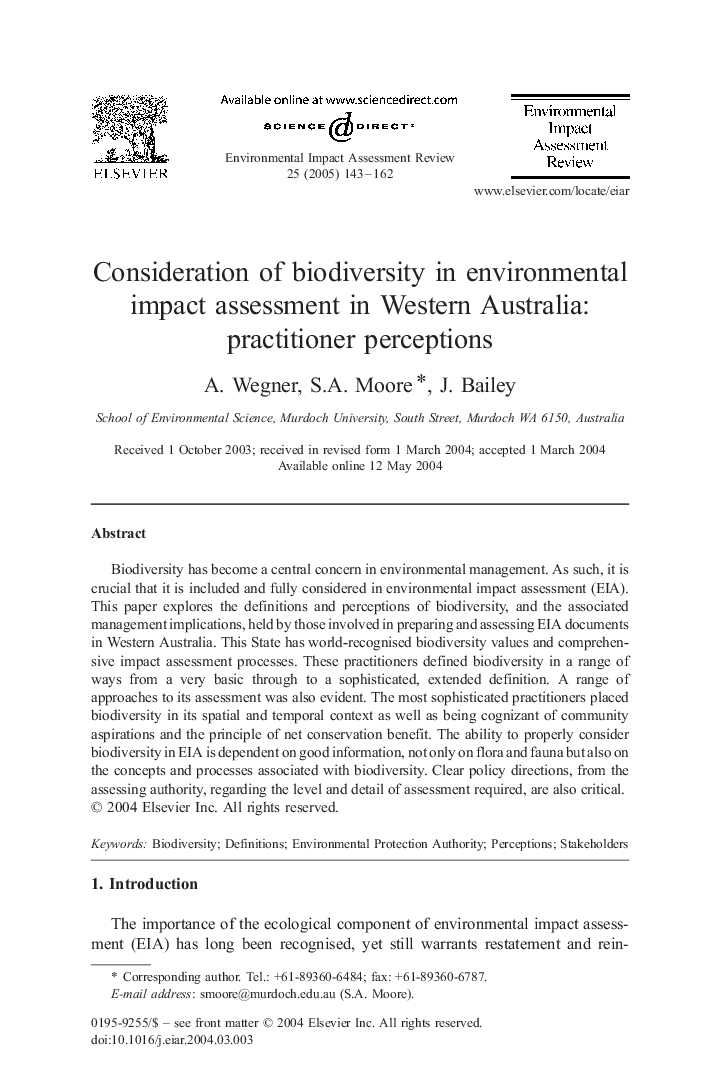| Article ID | Journal | Published Year | Pages | File Type |
|---|---|---|---|---|
| 10504293 | Environmental Impact Assessment Review | 2005 | 20 Pages |
Abstract
Biodiversity has become a central concern in environmental management. As such, it is crucial that it is included and fully considered in environmental impact assessment (EIA). This paper explores the definitions and perceptions of biodiversity, and the associated management implications, held by those involved in preparing and assessing EIA documents in Western Australia. This State has world-recognised biodiversity values and comprehensive impact assessment processes. These practitioners defined biodiversity in a range of ways from a very basic through to a sophisticated, extended definition. A range of approaches to its assessment was also evident. The most sophisticated practitioners placed biodiversity in its spatial and temporal context as well as being cognizant of community aspirations and the principle of net conservation benefit. The ability to properly consider biodiversity in EIA is dependent on good information, not only on flora and fauna but also on the concepts and processes associated with biodiversity. Clear policy directions, from the assessing authority, regarding the level and detail of assessment required, are also critical.
Related Topics
Physical Sciences and Engineering
Energy
Renewable Energy, Sustainability and the Environment
Authors
A. Wegner, S.A. Moore, J. Bailey,
